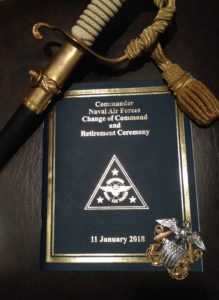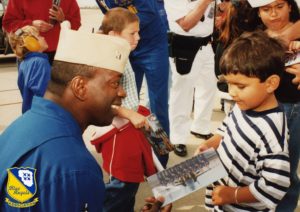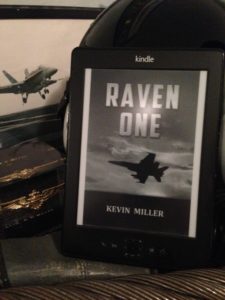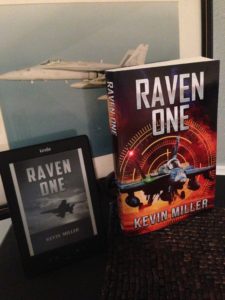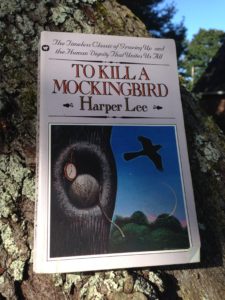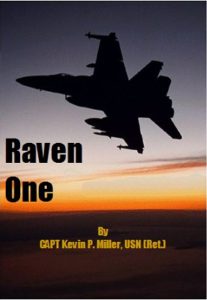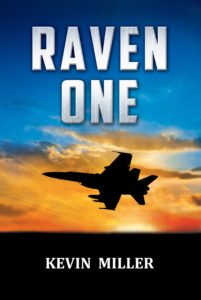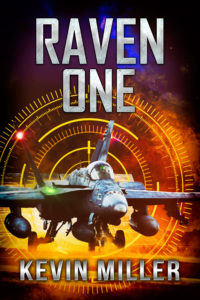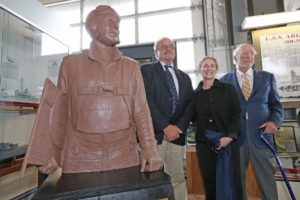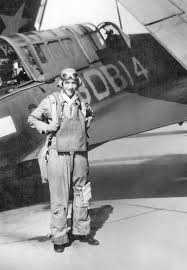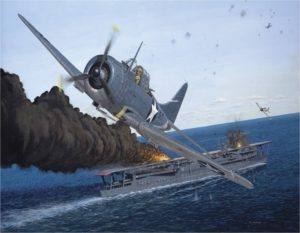Where Everybody Knows Your Name
People sometimes ask me if I miss flying. After all, who wouldn’t want to zip around at supersonic speeds and cloud-surf over the world’s oceans. I smile as I struggle to answer. What I should say is, “sure do!” or “only when I think about it,” which are boilerplate answers to the question. Another common question is, “what is it like to fly a fighter jet?” and as I’ve written before, how do you answer that one in a sentence or two? But back to the first question: Yes, I say, then add, as we aviators tend to do, the specifics. What I miss is naval aviation, the challenge and the camaraderie.
My wife and I were privileged to attend a Navy Change-of-Command and retirement ceremony last week in San Diego, where my friend VADM Mike “Shoe” Shoemaker relinquished command of Naval Air Forces to my friend VADM Chip “Bullet” Miller. It was held aboard Naval Air Station North Island, technically called Naval Base Coronado, but I hope the colloquial North Island lives on forever. It was held in a spacious aircraft hangar on the flight line not far from the I-Bar…more on that later.
We arrived the night before and saw friends. Actually we saw friends on the plane, friends of over 30 years, and there was not a moment during the next three days and nights that we were not among the types of friends you “grew up” with. We’ve been to each others homes, we’ve put each other up in our homes, and watched our kids play together and form their own life-long bonds. Some children we’ve known since infancy and pre-school attended, and some children were in dress blue uniforms.
On Thursday morning we rose early, and with the lobby mobbed with friends we hadn’t seen in some time there was no time to grab a bite to eat and still make the ceremony. Like Tailhook conventions, you make small-talk for 15-30 seconds before time or a coffee-line pulls you away. However, sometimes we had longer to really catch up, to understand what each other is doing, and to convey how much we mean to each other.
In this aviation community it is custom to begin these ceremonies at 1000am on a Thursday. Knowing it would be well attended we arrived early, to park the car, to find the assigned seats, and to socialize. I drove up with my parking pass displayed and identified myself. The Chief monitoring the parking lot asked me if I was family; well, I said, we were squadronmates and roommates. Close enough sir, park over there with the family!
We entered – joining a long line of friends – and got our seating assignment as the Navy Band played the familiar and stirring National Emblem. Row upon row – upon row – of seats were arranged with the dias platform at the hangar bay entrance, with naval static-display aircraft parked outside on the flight line. Business suits for men, most of us retired, and semi-formal business attire for the ladies, a smaller number also retired. It is our American social custom to shake hands, even after decades apart from someone you spent months living with. Our eyes meet and we move toward one another, shipmates who remember each other in our 20’s, squeezing one another’s hand in a manly grasp – and sometimes bringing that in for a closer hug signifying a shared experience and kinship. The ladies radiate dazzling smiles and share warm embraces – with everyone. It is like a family reunion. It is family, and we compliment each other and remark about the kids and the latest Facebook update until others grab our elbows as the process is repeated.
The ceremony begins on time, to the second. We stand as the official party is “piped” aboard through rows of side-boys as active duty salute. As Ruffles and Flourishes sounded I watched my friends in their Full Dress Blue regalia with pride, recalling flight school, and fun FA-18 hops over North Florida, and backyard bar-b-q’s with the kids running around. On the dias I know all the admirals, three of whom I have personal relationships.
The colors are paraded. All stand – not standing is unthinkable – and once the flag approaches we place our hands over our hearts while those in uniform salute. All one thousand guests are at attention, if they served in uniform or not, and all are still as the soloist sings the words to the song we all know by heart. During the last stanza I saw them over Point Loma, six dots signifying the familiar Delta formation, smoke-ON, and as the anthem ended the sound of 12 F404 engines increased to booming roar as the Blue Angels – their Hornets hook-down to make a statement – thundered over the hangar at 200 feet. Cool.
These ceremonies are pretty much cookie-cutter: A solemn invocation, guest speaker speech, medal award (Distinguished Service) to the outgoing commander followed by his farewell speech, the actual change of command, speech (short) by the incoming commander, benediction. This one was also a retirement for Shoe, hanging it up after almost 36 years of commissioned service. An American flag he had flown over his two carrier flagships and Naval Air Forces HQ was passed up the line as a poem was read. After it was placed in his hands, Shoe gave it to his mother in the front row, herself the widow of a veteran buried at Arlington. Moments later, with the crowd on their feet, Shoe, Peggy, and their girls were “piped over the side” between the side boys in naval tradition as all saluted Shoe, “going ashore” for the last time. At the end Peggy let out a whoop. Freedom!
There is a time in each ceremony, when the outgoing and incoming commander face each other, and using the words used on ship bridges as watches are changed every four hours all over the world, transfer authority and responsibility from one to the other. Shoe told Bullet he was prepared to be relieved as Commander, Naval Air Forces. Bullet saluted and said, “I relieve you, sir!” and Shoe answered, “I stand relieved.” At that moment Bullet took the conn, or in aviation terms, the lead, and both reported to Fleet Commander “Notso” that one was relieved and the other had assumed command and commensurate responsibilities even I can only imagine. In front of the assembled staff and 1,000 witnesses there was no doubt. We love our change-of-command ceremonies, and they are effective.
Once dismissed we fall into more handshakes and embraces with all around us, and congratulating Shoe and Bullet after standing in long lines to do so. Outside on the sun-splashed flight line the “petting zoo” of fleet aircraft await guests to get a closer look, and a catering tent forms a line that begins near the hangar. The legends mingle about, current rising stars chat in groups, and we see friends and shipmates we note to find later; sadly, I missed chances with a few in the giant crowd.
That afternoon we gathered on the rooftop with bottles and cups – not that we are glorifying anything, mind you – and reflected on the ceremony and caught up with those we had not yet had a chance. A loud, booming, deafening sound erupted next to us and soon a JSF appeared behind our building as it took off to the west. It turned hard left and departed to the south along Point Loma; several in our group knew the pilot flying it. That afternoon two Super Hornets came into the break and landed, with us has-beens watching the entire time. The next morning I ran into one of the lieutenants that flew one, one whom I’ve met before.
The next two days and nights were filled with social events; a huge reception at the Island Club, golf (Friday and Saturday, with a few legit par holes!), side trips to Coronado and a gathering at the famous I-Bar. Legend has it you’ll always see an old friend there each time you walk in, and I’ve found that to be pretty much true over the years I’ve visited, in a flight suit or civvies. Like the weekend, it is where everybody knows your name. (Don’t touch the model airplanes, and don’t put your phone on the bar!)
We went to mass Sunday morning to give thanks before lugging our stuff to Lindbergh for the flight home. Just to be there at such an important ceremony, to see so many of our closest friends, to enjoy the balmy SoCal sun while the rest of the US was scraping ice off windshields (we should live here!), and spend time smiling and laughing and enjoying each other’s familiar company – it is priceless.
While the ages of those attending ranged from mid-90’s to teen, most of our group that served with Shoe and Bullet are around 60, plus or minus. The ladies are aging gracefully and us guys are grayer, heavier, balder…but all of us wiser, knowing how special moments like these are. We look forward to the next time, to solve the world’s problems, to tell the same and sometimes new sea stories, to get the latest on the kids, and inquire about elderly parents who need our care now. To laugh and smile.
The challenge of naval aviation such as leading a complex airborne evolution is long past. Thankfully, my memories are rich. But the camaraderie I experienced remains, and we look forward to the next gathering in the coming months, or years, among familiar friends, as familiar as family, and not taking any of it for granted.
